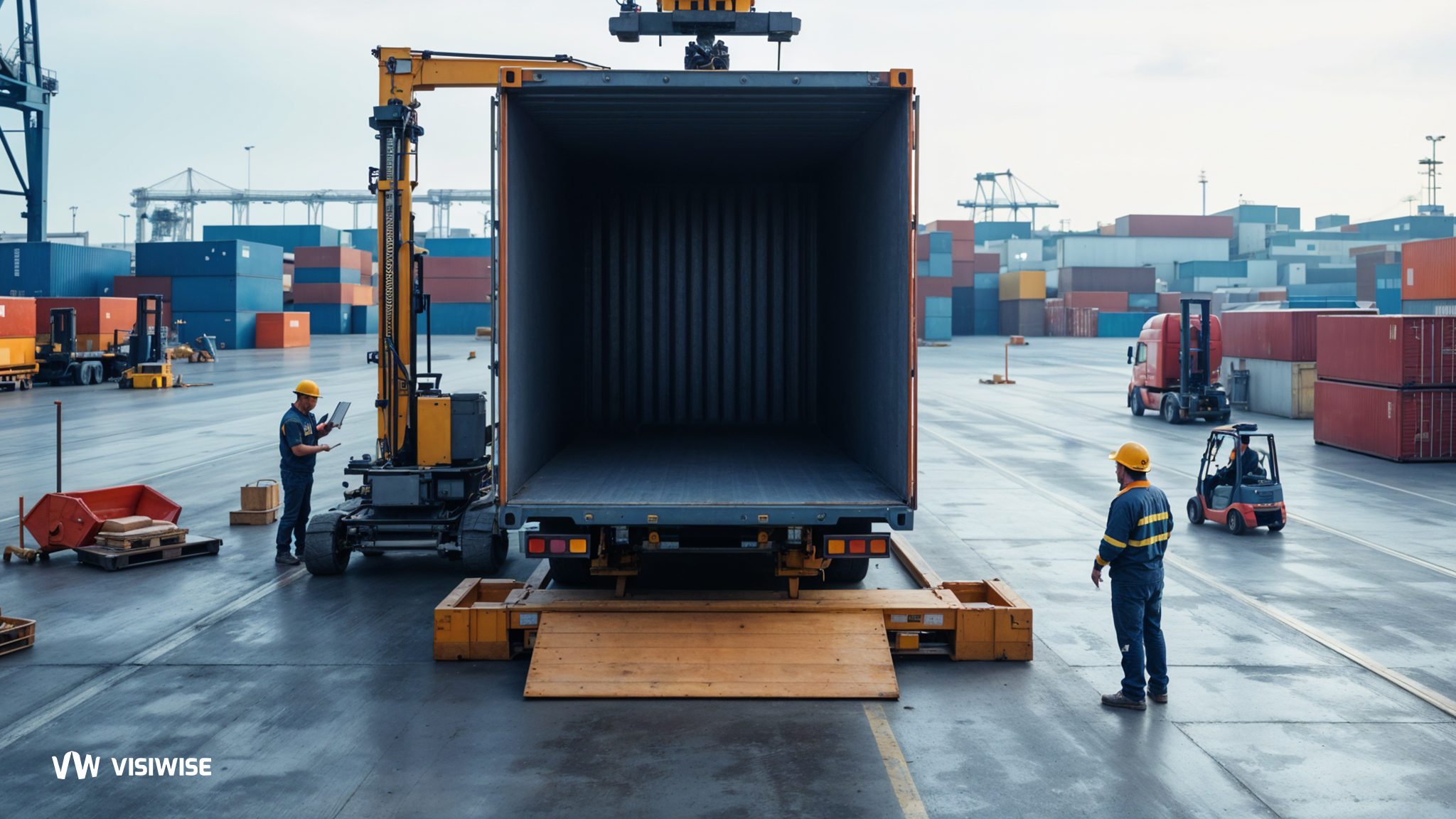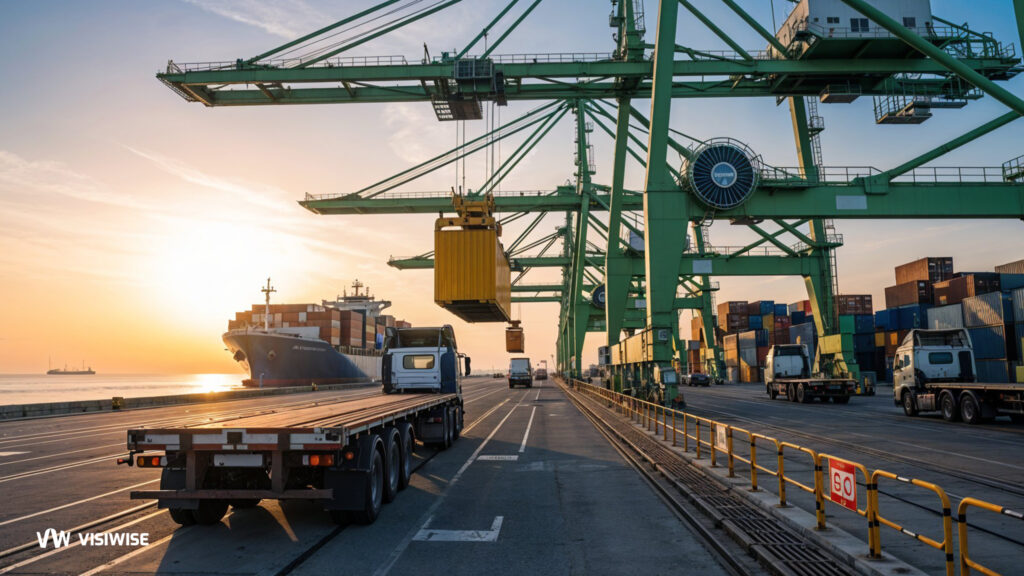The tare weight, net weight, and gross weight of cargo play a crucial role in ensuring that your shipment is transported legally, accurately billed, and safely delivered to its destination. Understanding and calculating these different weight categories can lead to significant cost savings and help prevent potential issues. But what do these terms really mean, and why is it important to distinguish between them? Let’s explore.
What is Tare Weight?
Tare weight refers to the officially recognized weight of an empty container, packaging, or vehicle without any contents loaded. It is often referred to as unladen weight.
For instance, if an empty shipping container weighs 500 kg, then that 500 kg is the container’s tare weight. This term applies to various types of containers, including boxes, drums, crates, pallets, railcars, semi-trailers, and more.
Understanding tare weight is essential for accurately determining the weight of the cargo itself, separate from the containers. Shippers need this information to calculate freight costs based solely on the weight of the payload (also known as net weight) rather than including the packaging. Additionally, tare weight ensures compliance with weight restrictions and load limits on roads, bridges, and other infrastructure.
How to Determine Tare Weight
At loading facilities, warehouses, and ports, scales are used to weigh empty containers before cargo loading. All carriers and manufacturers provide tare weight for their containers.
For example, a standard 20-foot steel container typically has a tare weight of about 2,200 kg (4,850 lb). A 40-foot steel container usually has a tare weight of around 3,750 kg (8,267 lb).
If you are transporting cargo, you can easily find the tare weight using your container number through the carrier’s resources.
Significance of Tare Weight in Shipping
Accurate Freight Charges: Shipping companies determine their fees based on the weight and volume of cargo. To prevent overpayment, shippers need to know the tare weight of the container for precise freight charge calculations.
Regulatory Compliance: Many countries impose weight restrictions for road transportation. Being aware of the tare weight ensures that the total weight of the container remains within legal limits.
Safety Considerations: Overloading a container beyond its maximum gross weight can result in accidents, equipment damage, or complications during stacking and transportation. Understanding tare weight is essential for maintaining safe load limits.
Impact on Container Management:
In the context of supply chain operations, tare weight is a factor that affects how containers are selected and managed. Understanding the tare weight allows for better planning of cargo load distribution, especially when multiple shipments are consolidated into a single container.
Types of Containers and Their Tare Weights:
Different types of containers have varying tare weights based on their size and materials. Below is a general guide to common container types and their tare weights:
| Container Type | Standard Tare Weight |
| 20-foot Dry Container | ~2,200 kg (4,850 lbs) |
| 40-foot Dry Container | ~3,750 kg (8,268 lbs) |
| 20-foot Refrigerated (Reefer) Container | ~2,750 kg (6,062 lbs) |
| 40-foot High Cube Container | ~4,000 kg (8,818 lbs) |
These values can vary slightly depending on the manufacturer and specific container design.
What Is the Difference Between Tare Weight, Gross Weight, and Net Weight?
Understanding these three weight measurements is essential in shipping and logistics:
- Tare Weight: This is the weight of an empty container or packaging. It does not include any cargo or goods. Knowing the tare weight helps shippers calculate freight costs and ensures compliance with weight regulations.
- Gross Weight: This refers to the total weight of the container, including the tare weight and the weight of the cargo it carries. Gross weight is important for determining shipping fees and ensuring that the total weight does not exceed legal limits.
Note: Gross weight excludes the vehicle’s weight prior to loading.
a. The gross weight must remain within legal road limits and the vehicle’s load capacities to prevent fines or accidents.
b. Carriers calculate their freight charges based on the total gross weight, while ports use this measurement to assess harbor fees.
c. Similarly, aircraft have maximum gross takeoff weights that include luggage, passengers, and fuel.
- Net Weight: This is the weight of the cargo alone, excluding the tare weight. Net weight provides a clear understanding of the actual amount of goods being transported, which is crucial for inventory management and pricing.
a. Correct net weights ensure that customers pay freight charges based solely on the actual weight of their goods, rather than the weight of the containers.
b. This practice also facilitates accurate inventory tracking by excluding packaging.
c. Additionally, net weight must be indicated on consumer goods, as mandated by law.
Common Questions about Tare Weight in a Nutshell
What is the tare weight of a 40ft container?
Approximately 3,750 kg (8,265 lbs ).
What is the tare weight of a 20 ft container?
Approximately 2,200 kg (4,850 lbs).
How to calculate tare weight of a container?
Tare weight is typically provided by the container manufacturer. It can also be calculated by weighing the empty container.
Why is it called tare weight?
The term "tare" comes from the Arabic word "tarah," meaning to subtract. It refers to the weight of an empty container.
What is the difference between tare weight and shipping weight?
Tare weight refers to the weight of the empty container, while shipping weight includes the container’s weight plus its cargo.
What does tare mean on a shipping container?
Tare refers to the weight of the container itself, without any cargo.
Is tare weight the actual weight?
No, tare weight is the weight of the empty container, not the actual weight of the container with cargo.
Is empty weight the same as tare weight?
Yes, empty weight is often synonymous with tare weight.
What is another name for tare weight?
Tare weight is also referred to as "empty weight."
How many pounds is a tare weight?
The tare weight of a 20ft container is about 4,850 lbs, and a 40ft container is approximately 8,265 lbs lbs.
What is overweight for a 20 ft container?
Typically, overloading a 20ft container exceeds 24,000 kg (52,910 lbs) gross weight.
What is the maximum weight a 20ft container can carry?
The maximum gross weight for a 20ft container is usually around 30,480 kg (67,200 lbs).
How to calculate tare weight?
Tare weight is determined by weighing the empty container or referring to specifications provided by the manufacturer.
What does GVM stand for?
GVM stands for "Gross Vehicle Mass," the total weight of a vehicle including its load.
What is the tare weight of a 20 tank container?
Generally, around 2,500 kg (5,511 lbs), depending on the design.
Why is it called tare?
The term "tare" is used to indicate the weight deduction from the total to get the net weight.
Does tare weight mean empty weight?
Yes, tare weight indicates the empty weight of the container.
What is another word for tare?
Another word for tare is "empty weight."
What is the opposite of tare weight?
The opposite of tare weight is "gross weight," which includes the weight of the cargo and the container.
The Bottom Line
Understanding tare weight is essential for effective shipping and logistics management. It plays a pivotal role in calculating accurate freight charges, ensuring regulatory compliance, and promoting safety during transportation. By distinguishing between tare weight, gross weight, and net weight, shippers can optimize their operations, avoid unnecessary costs, and maintain legal limits on vehicle loads. As the shipping industry continues to evolve, staying informed about these weight measurements will remain crucial for successful and efficient cargo transport. Knowledge of tare weight not only streamlines shipping processes but also contributes to a more organized and reliable supply chain, ultimately benefiting businesses and consumers alike.



